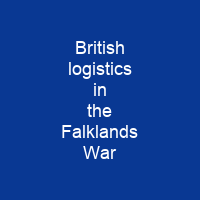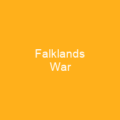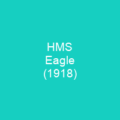The Falkland Islands Conflict: A Logistical Marvel
Imagine a scenario where the British military must embark on an operation thousands of miles away, with no easy access to supplies or reinforcements. That was the reality faced by the Royal Navy and Army during the 1982 Falklands War. The logistical challenges were immense, but how did they manage it all? Let’s dive into the heart of this complex operation.
Initial Preparations
The British government had to act swiftly when the Argentine military invaded the Falkland Islands. On 2 April, orders went out to prepare the Royal Navy’s two aircraft carriers, HMS Hermes and Invincible, for a mission. The Royal Navy also had two landing platform dock (LPD) ships, HMS Fearless and HMS Intrepid, at Portsmouth, where HMS Fearless was acting as an officer training ship.
But the rest of the Royal Navy’s amphibious capability consisted of six Round Table-class landing ship logistics (LSL) ships, but only four were immediately available. The Royal Navy also used stores ship RFA Stromness as an LPD in the initial stages. Civilian ships could be obtained by charter or requisition, and the British government resorted to requisitioning them.
Half of the civilian ships were requisitioned, while the rest were chartered. An Order in Council was issued on 4 April allowing any British ship to be requisitioned. The British government paid a 150 per cent bonus to crewmen who served in the South Atlantic and retained all British-flagged vessels with British nationals as crewmen.
Ship Requisitioning and Conversion
The STUFT (Sea, Tanker, Utility, Fleet Oilers) had to be designed for range, endurance, and sea-keeping qualities. Only one vessel was taken up for every four inspected. Over the next few months, 54 ships were requisitioned from 33 owners.
During the Falklands War, the aircraft carriers carried 100,000 long tons of freight, 95 aircraft, 9,000 personnel, and 400,000 long tons of fuel. The 3rd Battalion, Parachute Regiment was added to Thompson’s 3rd Commando Brigade on 3 April.
The Chiefs of Staff Committee recommended further reinforcing the brigade with another battalion. The MV Norland was requisitioned for 2 Para, but it had limited unloading facilities. The MS Elk and MS Europic Ferry were taken up for vehicles and stores. Cunard’s SS Atlantic Conveyor was converted into an aircraft transport.
Logistical Challenges at Ascension Island
Ascension Island became a crucial base for resupplying the British forces. It had limited infrastructure, including a small hardstand area for parking aircraft. The island was resupplied via charter flights and the RMS St Helena freighter before the Falklands War.
The Ministry of Defence chartered MV Stena Inspector and HMS Dumbarton Castle for cargo duty. British forces arrived on Ascension in April, establishing a base with over 800 personnel and operating helicopters. The US allowed the British to use a portion of their stored fuel, which was later replenished by a supply tanker.
A pipeline was built to transport fuel from the storage tanks at Wideawake Airfield to the fuel farm. Fuel storage at Wideawake Airfield increased by 180,000 US gallons after adding fuel bladders. RAF presence expanded with 2 Hawker Siddeley Nimrod aircraft and 17 Handley Page Victor tankers arriving on Ascension Island in April.
Amphibious Force and Cross-Decking
The amphibious force spent eleven days re-stowing its equipment, using helicopters to launch cargo due to Fearless’s height issue. Shortages of lifting gear and cargo nets hampered the effort. The LSLs were stocked with supplies for an amphibious assault, while Intrepid, Atlantic Conveyor, Norland, and Europic Ferry departed the UK on 25-26 April.
The five LSLs set out for the Falkland Islands on 1 May, along with Pearleaf and HMS Antelope. Norland arrived at Ascension on 7 May and departed the following evening. The remaining ships left within a few days of each other. Modified Hercules aircraft were used to allow ships to be resupplied by air in the South Atlantic, with added auxiliary fuel tanks increasing their range.
Logistical Operations During the Landing
The landing at Green Beach was disrupted due to logistical issues. The stores had to be landed as quickly as possible, leading to some unnecessary items being left behind. Commander Rick Jolly established a field hospital in a refrigeration plant. Atlantic Conveyor was struck by an Exocet anti-ship missile on May 25 and set ablaze.
She remained afloat for several days but nothing could be salvaged. Twelve people died, 150 were rescued. 1 Squadron RAF had been transferred to Hermes, but three Chinooks, six Wessex helicopters, and other assets were lost. A lone surviving Chinook landed on Hermes, then arrived at San Carlos with two aircrews and a maintenance detachment without tools or spare parts.
Post-Landing Operations
The Royal Navy designated a TRALA (Tug, Repair and Logistics Area) where ships could receive supplies and conduct repairs. Hercules airdrops were made to ships there, but requested supplies took at least two days to fetch from the TRALA. The provision of fuel posed a special challenge, as Rapier batteries required constant service to keep their generators running.
The 3rd Commando Brigade used Sea Kings with night vision equipment for night operations, leaving others available for logistical and tactical missions. However, requested supplies were often delayed or substituted, leading to issues with storage, handling, and prioritization.
Conclusion
The Falkland War highlighted the critical role of logistics in modern military operations. Despite the challenges, British forces managed to overcome them through meticulous planning, resourcefulness, and a willingness to adapt. The lessons learned from this conflict have shaped military strategies worldwide, ensuring that future operations are better prepared for the logistical demands they will face.
The Falkland War was not just about soldiers on the ground; it was also about the unseen heroes who ensured supplies reached them when needed. From requisitioning ships to building airstrips and managing fuel distribution, every detail mattered in this far-flung conflict. The logistical prowess displayed during the Falklands War remains a testament to the ingenuity and determination of those involved.

You want to know more about British logistics in the Falklands War?
This page is based on the article British logistics in the Falklands War published in Wikipedia (retrieved on November 28, 2024) and was automatically summarized using artificial intelligence.







